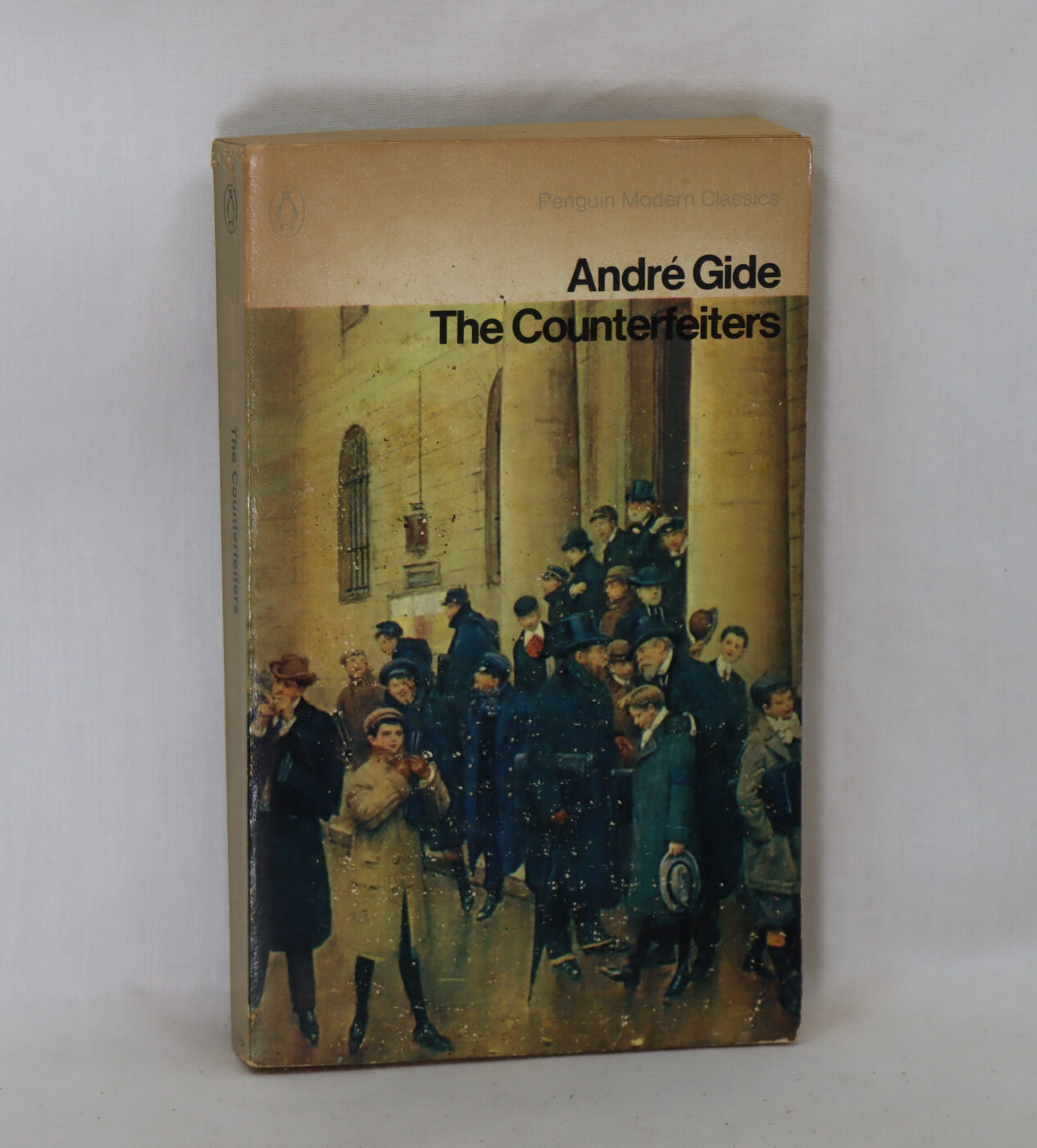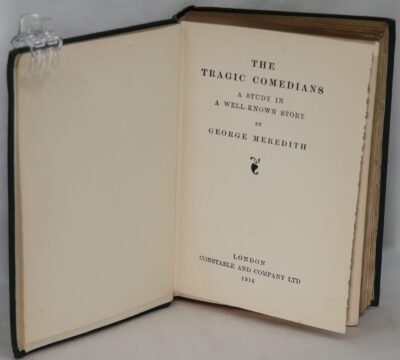The Counterfeiters.
By Andre Gide
Printed: 1966
Publisher: Penquin Books. London
| Dimensions | 11 × 18 × 2 cm |
|---|---|
| Language |
Language: English
Size (cminches): 11 x 18 x 2
Condition: Fair (See explanation of ratings)
Your items
Item information
Description
Paperback. Grey cover with black title.
We provide an in-depth photographic presentation of this item to stimulate your feeling and touch. More traditional book descriptions are immediately available
A FROST PAPERBACK is a loved book which a member of the Frost family has checked for condition, cleanliness, completeness and readability. When the buyer collects their book, the delivery charge of £3.00 is not made
The Counterfeiters (French: Les Faux-monnayeurs) is a 1925 novel by French author André Gide, first published in Nouvelle Revue Française. With many characters and crisscrossing plotlines, its main theme is that of the original and the copy, and what differentiates them – both in the external plot of the counterfeit gold coins and in the portrayal of the characters’ feelings and their relationships. The Counterfeiters is a novel-within-a-novel, with Édouard (the alter ego of Gide) intending to write a book of the same title. Other stylistic devices are also used, such as an omniscient narrator who sometimes addresses the reader directly, weighs in on the characters’ motivations or discusses alternate realities. Therefore, the book has been seen as a precursor of the nouveau roman. The structure of the novel was written to mirror “Cubism”, in that it interweaves between several different plots and portrays multiple points of view. The novel features a considerable number of bisexual or gay male characters – the adolescent Olivier and at least to a certain unacknowledged degree his friend Bernard, in all likelihood their schoolfellows Gontran and Philippe, and finally the adult writers the Comte de Passavant (who represents an evil and corrupting force) and the (more benevolent) Édouard. An important part of the plot is its depiction of various possibilities of positive and negative homoerotic or homosexual relationships. In the years since its publication, The Counterfeiters has gained a reputation as Gide’s masterpiece. It is now generally counted among the Western canon of literature. The making of the novel, with letters, newspaper clippings and other supporting material, was documented by Gide in his 1927 Journal of The Counterfeiters.
André Paul Guillaume Gide (22 November 1869 – 19 February 1951) was a French writer and author whose writing spanned a wide variety of styles and topics. He was awarded the 1947 Nobel Prize in Literature. Gide’s career ranged from his beginnings in the symbolist movement to criticising imperialism between the two World Wars. The author of more than 50 books, he was described in his New York Times obituary as “France’s greatest contemporary man of letters” and “judged the greatest French writer of this century by the literary cognoscenti.” Known for his fiction as well as his autobiographical works, Gide expressed the conflict and eventual reconciliation of the two sides of his personality (characterized by a Protestant austerity and a transgressive sexual adventurousness, respectively). Gide engaged in child rape—having sex with boys who were not of the age of consent. As a self-professed pederast, he used his writing to explore his struggle to be fully himself, including owning one’s sexual nature, without betraying one’s values. His political activity was shaped by the same ethos. While sympathetic to Communism in the early 1930s, like many intellectuals, after his 1936 journey to the USSR he supported the anti-Stalinist left; during the 1940s he shifted towards more traditional values and repudiated Communism as an idea that breaks with the traditions of Christian civilization.
Want to know more about this item?

Related products
Share this Page with a friend









